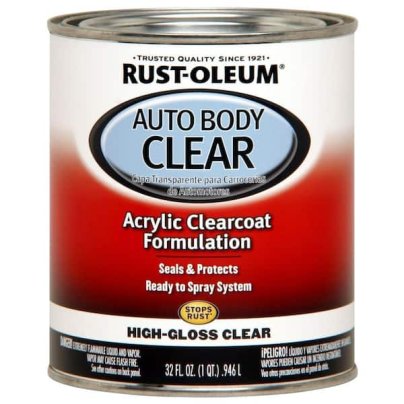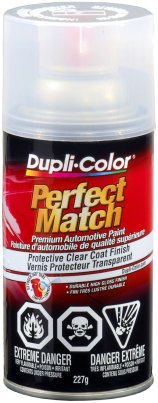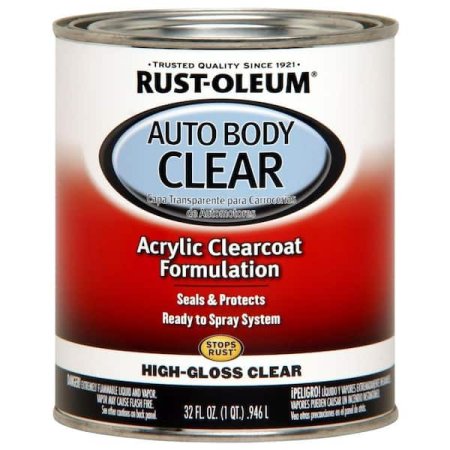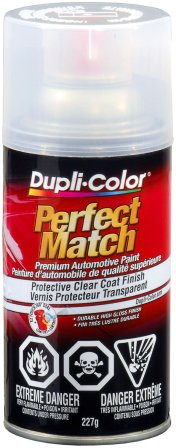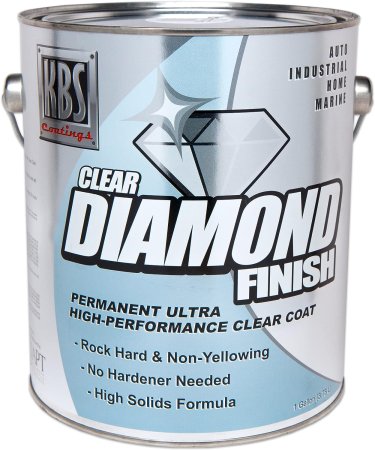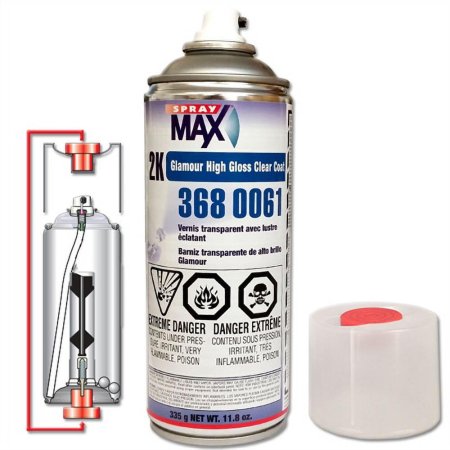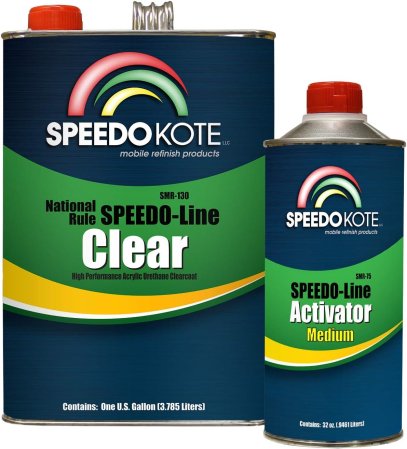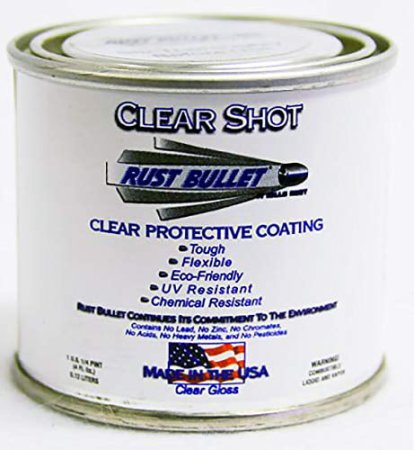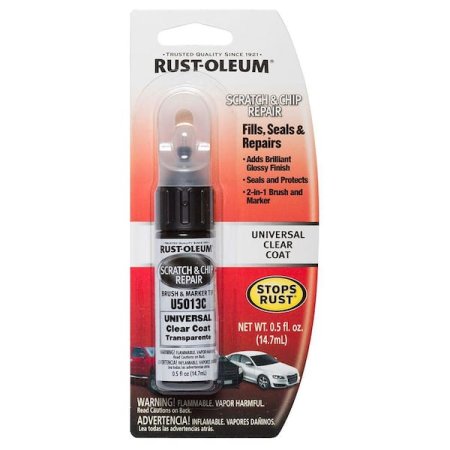We may earn revenue from the products available on this page and participate in affiliate programs. Learn more ›

When your car first hits the dealership lot, it looks its best. That’s partly thanks to its sleek, glossy clear coat. Added atop every color of body paint, automotive clear coat is a must-have to protect your car’s vibrant color, its shine, and its overall appearance. But clear coat offers more than shine. It can also protect against UV rays, corrosion, and fading color over time. However, as your car spends time outdoors and out on the road, that original clear coat can disappear, especially as you repair scratches, dents, and other flaws that come with wear and tear. Every time you gently buff out a scratch or give your exterior a polish, you’re taking some of the clear coat away. That’s why it’s a smart idea to stock your garage with a quality clear coat that you can apply as often as needed, enhancing the protection and the appearance of your car no matter its age.
Summary List
Best Overall: Rust-Oleum Acrylic Clear Coat
Best Value: Duplicolor Clear Exact-Match Automotive Top Coat
Honorable Mention: KBS Coatings 8504 Diamond Finish Clear Coat
Most Durable: USC Spray Max 2k High Gloss Clearcoat Aerosol
Most UV Resistant: Speedokote SMR-130/75 K-M-Automotive Clear Coat
Most Chemical Resistant: VHT Clear Coat Wheel Paint Can
Best for Corrosion: Rust Bullet Clear Protective Coating
Most Restorative: Rust-Oleum Scratch & Chip Repair
Our Methodology
I chose the best automotive clear coats by searching for products that were easy to apply, effective at offering lasting protection, and able to blend in for a smooth, sleek appearance. The standout products that made this list were those made by reputable brands as well as those that had highly positive user reviews, with feedback that consistently noted how well each performed in real-world settings. Appearance was a consideration to ensure that as you fix flaws, your newly applied clear coat can blend right in for a seamless look.
Best Automotive Clear Coat Reviews & Recommendations
Best Overall
Rust-Oleum Acrylic Clear Coat
Best Value
Duplicolor Clear Exact-Match Automotive Top Coat
Honorable Mention
KBS Coatings Diamond Finish Clear Coat
Most Durable
USC Spray Max High-Gloss Clear Coat
Most UV Resistant
Speedokote K-M-Automotive Clear Coat
Most Chemical Resistant
VHT Clear Coat Wheel Paint
Best for Corrosion
Rust Bullet Clear Protective Coating
Most Restorative
Rust-Oleum Scratch and Chip Repair
Our Verdict
The Rust-Oleum Acrylic Clear Coat earns our top spot because it not only makes your paintwork look wetter and more glamorous, but it also protects from rust. If you want to spend less money, you can opt for the Duplicolor Clear Exact-Match Automotive Top Coat for a quick fix of your clear coat right in your home garage.
Things to Consider Before Buying Automotive Clear Coat
No two automotive clear coat products are the same. From the kinds of protection offered to the level of gloss and shine created, each has its own pros and cons. To make sure you’re picking out a clear coat that suits both your needs and your preferences, here’s what to look for.
Types of Automotive Clear Coats
Topcoat
Topcoat clear coats are typically applied as a final coat over colored base paint on your vehicle. These coats are easy to polish, have great depth, and provide a glossy appearance. Topcoats also dry quickly.
Glamour
Glamour clear coats take longer to dry and therefore allow you to do more leveling on the vehicle’s body. You can heat the coat to speed up the drying process. Glamour coats are also more resistant to moisture.
Turbo
Turbo clear coats are ideal for collision repairs. They help cover up dents, chips, and scratches and require more polishing to get a glossy finish. They dry fast, and buffing can be done to the coat shortly after.
Higher Solid
Higher solid coats provide a thicker film over the paintwork. For that reason, they take longer to dry as the solvent takes time to fully evaporate. Higher solid coats are also the most expensive.
Key Features
Gloss Level
Almost all clear coats result in a glossy finish, but the level is measured in units from 0 to 100, with 0 being the lowest gloss level and 100 being the highest. You are better off with a clear coat with a gloss level of 90 units. It will give your car a shiny new look.
Drying Time
Clear coats have varied drying times depending on the type. Go for fast-drying types like turbo and topcoat clear coats if you would like to buff the coat an hour after applying it. If you don’t mind waiting a few days for a tough coat to settle in, you could go for glamour or high solid coats.
Ease of Application
It’s expensive to pay for a professional paint job, so the application process should be simple for an average user. The easiest coats to apply come in spray cans. If you want to do a full-body paint, you could go for a one-gallon paint can and purchase a spray gun for the application.
Transparency
Clear coats are non-pigmented paints, but some change the color of the base paint by darkening it. Select a clear coat that creates a transparent, glass-like layer on the base coat if you don’t want your vehicle’s original color altered.
Scratch Resistance
Scratches are hard to avoid, and your topcoat should at least offer scratch-resistant properties. You should also be on the lookout for a clear coat that offers abrasion or chip resistance.
UV Protection
Some clear coats are formulated with UV-resistant compounds to prevent UV rays from discoloring your car. It may not be maximum UV protection, but just enough to preserve your car’s original color for a longer period.
Automotive Clear Coat Pricing
For less than $50, you can find clear coats of varying quality, typically sold in 12- to 15-ounce spray cans. These are ideal for sealing small dents, scratches, and other minor flaws. For $50 to $100, you’ll find aerosol cans in packs, along with one-gallon cans of clear coat that can cover both repairs and a full fresh coat. If you spend $100 or more, you’ll be able to choose from some of the most premium clear coat products with top-tier protection and shine.
FAQs
You’ve got questions. The Drive has answers.
On average, it can take about 15 to 30 minutes, depending on the type of formula used. Spray-on formulas are usually quicker to dry. Most clear coats will come with instructions on the label on how long to wait between coats.
It’s recommended that you apply multiple coats for a glossier finish. A single coat may look a bit frosty, and it may start to flake or crack after only a few months. So consider adding up to four coats for the best results.
No, it’s not necessary. Sanding between layers may make the coat a bit thinner than it needs to be, and you run the risk of sanding it down to the base coat. Also, sanding between coats will only extend the time you need to get the job done. You should only sand the final coat and do it so gently that you don’t have to redo the coat. However, you can sand out any dirt or debris before applying another layer to achieve a cleaner coat.
If you haven’t pinned it down to a manufacturing defect or a product from a low-quality brand, then you may have taken too long between applying the base coat and topcoat. In that case, your base coat may be too dry and may not stick correctly to the topcoat. Also, tiny stones, pebbles, and debris flung at your vehicle when driving could cause the topcoat to start peeling.
Most waxes can be used on cars with clear coats, but it’s prudent to check the manufacturer’s instructions. The chief reason is that some clear coats form a thin layer, and it’s easy to rub them off if you rub in the wax too hard or use a tough fabric to apply the wax.
Yes, you can. But before you do, ensure that you dust the headlights, scuff the plastic, and polish out any scratches. Use urethane-based clear coats as they are more adhesive to plastic.
